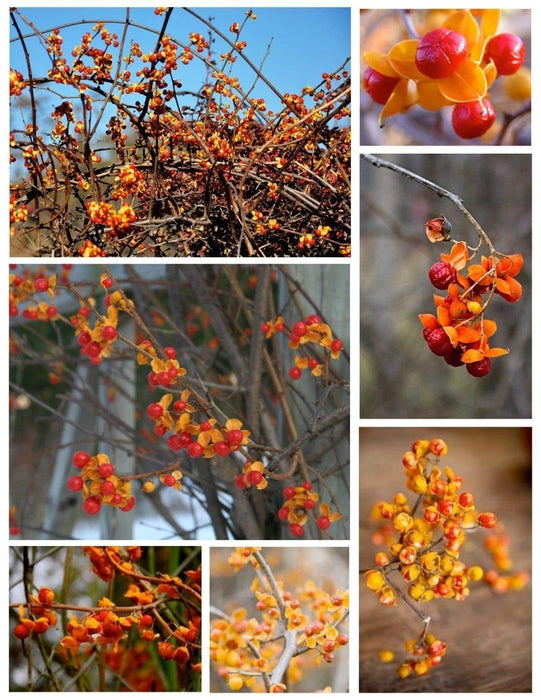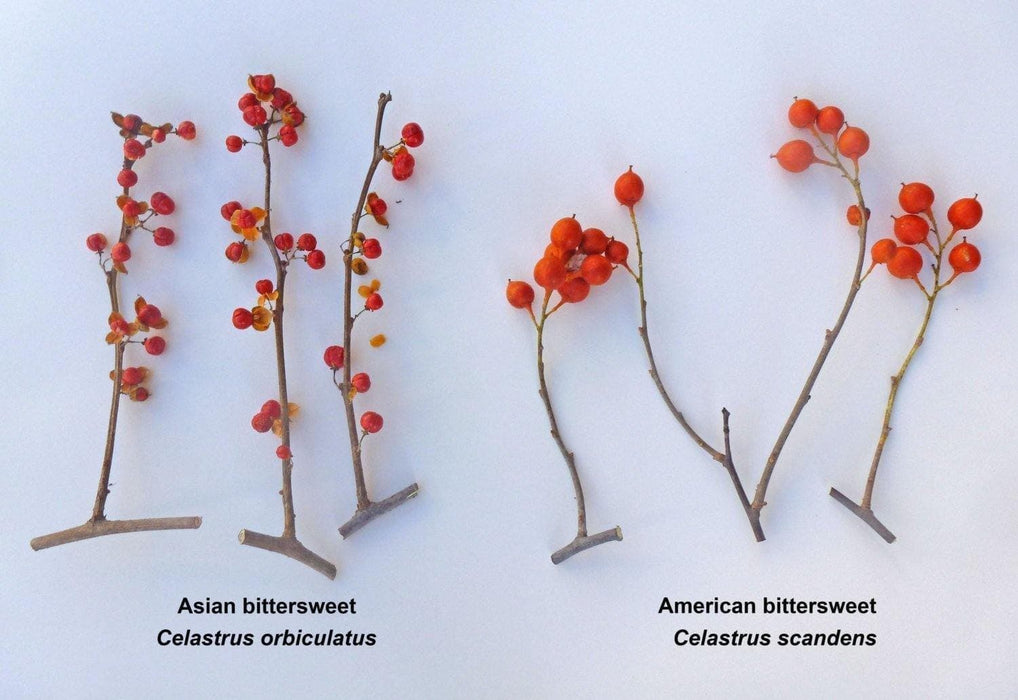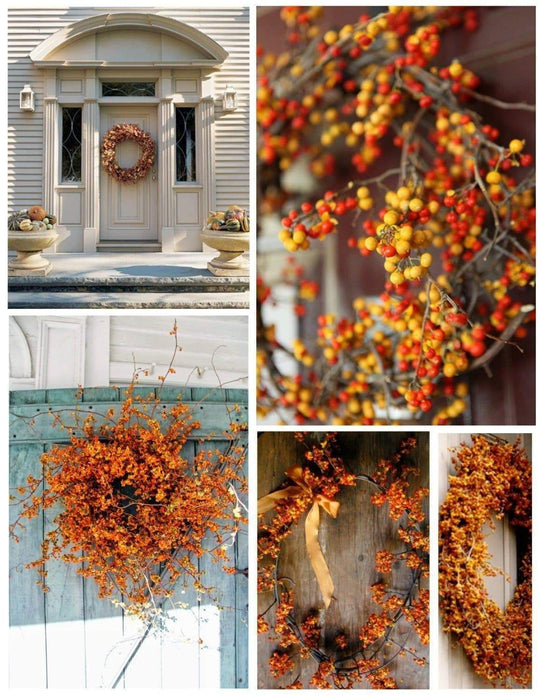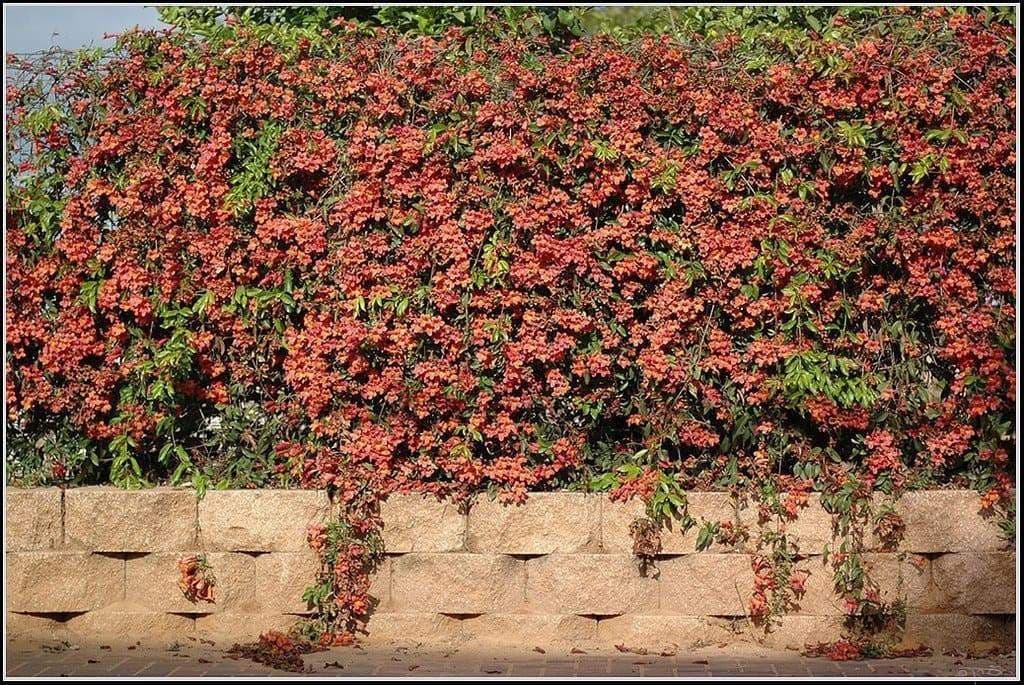
American Bittersweet Seeds - Celastrus scandens - Ornamental Fruit,
Original price
$ 3.25
-
Original price
$ 17.54
Original price
$ 3.25
$ 3.25
-
$ 17.54
Current price
$ 3.25
Most orders are processed by the next day
Select your desired size and/or color from the available options.
- American Bittersweet Seeds - Celastrus scandens,
- Ornamental Fruit,Medicinal Plant,Honey Bee Food,Plant with Fast Growth,Poisonous Plant, Flowering Vine
- Medicinal Plant
- Honey Bee Food
- Plant with Fast Growth
- Poisonous Plant
- Ornamental Fruit
- Flowering Vine
- Vine
Another vigorous scrambling vine grown for its yellow-orange fruit capsules and crimson seeds; likes full sun; poor soil will slow the rampant growth
Wiki description:
Celastrus scandens , commonly called American Bittersweet or Bittersweet , is a species of staff vines that blooms mostly in June and is commonly found on rich, well-drained soils of woodlands . It has a sturdy perennial vine that may have twining , woody stems that are 30 feet (9.1 m) or longer and an inch or more thick at the base. The stems are yellowish-green to brown and wind around other vegetation , sometimes killing saplings by restricting further growth. It has tiny, scentless flowers at the tips of the branches. It has colorful, orange fruits that are the size of a pea . These fruits are poisonous to humans when ingested internally, but are favorites of birds. C. scandens roots were used by Native Americans and pioneers to induce vomiting , to treat venereal disease , and to treat symptoms of tuberculosis .
Climbing bittersweet was employed medicinally by a number of native North American Indian tribes, though it is scarcely used in modern herbalism. The root is diaphoretic, diuretic and emetic. It is a folk remedy for chronic liver and skin ailments (including skin cancer), rheumatism, leucorrhoea, dysentery and suppressed menses]. A strong compound infusion, usually combined with raspberry leaf tea, has been used to reduce the pain of childbirth. A poultice of the boiled root has been used to treat obstinate sores, skin eruptions etc. Externally, the bark is used as an ointment on burns, scrapes and skin eruptions. Extracts of the bark are thought to be cardioactive. Many plants in this genus contain compounds of interest for their antitumour activity.
American Bittersweet Vine: Tips For Growing Bittersweet Plants
Bittersweet vines are North American native plants that thrive throughout most of the U.S. In the wild, you can find it growing on the edges of glades, on rocky slopes, in woodland areas and in thickets. It often winds itself around trees and covers low-growing shrubs. In the home landscape, you can try growing bittersweet along a fence or other support structure.
What is American Bittersweet Vine?
American bittersweet is a vigorous deciduous, perennial vine that grows 15 to 20 feet tall. It is native to central and eastern North America. They produce yellowish-green flowers that bloom in spring, but the flowers are plain and uninteresting compared to the berries that follow. As the flowers fade, orange-yellow capsules appear.
In late fall and winter, the capsules open at the ends to display the bright red berries inside. The berries remain on the plant well into winter, brightening winter landscapes and attracting birds and other wildlife. The berries are poisonous to humans if eaten, however, so practice caution when planting around homes with small children.
Growing Bittersweet Vines
In very cold climates, make sure you plant American bittersweet vine (Celastrus scandens) rather than Chinese bittersweet (Celastrus rosthornianus). American bittersweet vine is hardy in U.S. Department of Agriculture hardiness zones 3 through 8, while Chinese bittersweet suffers frost damage and may die to the ground in USDA zones 3 and 4.
When growing bittersweet for the attractive berries, youâll need both a male and female plant. The female plants produce the berries, but only if there is a male plant nearby to fertilize the flowers.
American bittersweet vine grows quickly, covering trellises, arbors, fences and walls. Use it to cover unsightly features in the home landscape. When used as a ground cover, it will hide rock piles and tree stumps. The vine will climb trees readily, but limit the tree climbing activity to mature trees only. The vigorous vines can damage young trees.
American Bittersweet Plant Care
American bittersweet thrives in sunny locations and in almost any soil. Water these bittersweet vines by soaking the surrounding soil during dry spells.
Bittersweet vine doesnât usually need fertilization, but if it appears to get off to a slow start, it may benefit from a small dose of general purpose fertilizer. Vines that receive too much fertilizer donât flower or fruit well.
Prune the vines in late winter or early spring to remove dead shoots and control excess growth.
Growing Info:
Scarification:Soak in water, let stand in water for 24 hours.
Stratification:cold stratify for 90 days.
Germination:sow seed 1/16" deep, tamp the soil, mulch the seed bed.
Detailed Listing For
Botanical Name:
Akebia trifoliata
Family:
LARDIZABALACEAE
Genus:
Akebia
Species:
trifoliata
Common Name:
Three-leaf Akebia, Chocolate Vine
Seeds Per Pound:95,088
Quantity:0.23 lb
Avg Count Packet:102
Germination:98%
Germination Test Type: cut
Purity:99%
Height:30 feet
Collection Locale:China
Crop Year:2013
Minimum Hardiness Zone: 6
Materials: seed,annual,flowers,exotic vine,Ornamental Fruit,Medicinal Plant,Honey Bee Food,Plant with Fast Growth,Poisonous Plant Select your desired size and color from the available option
LET OUR CUSTOMER SPEAK FOR US

![[Seeds] - Caribbeangardenseed](http://caribbeangardenseed.com/cdn/shop/files/gift-card-gift-card-1_1024x1024_dfa857db-9150-4315-a362-7f0bb3fb9c47_60x28.png?v=1703978838)


